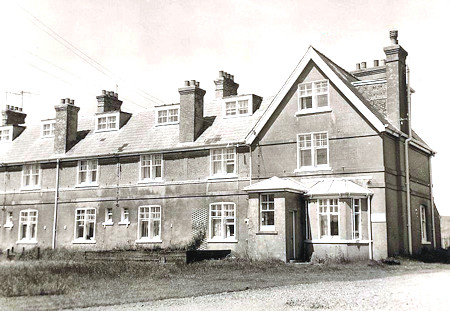Dungeness Historic Buildings

The Coastguard Lookout Tower is a former 1950s radar monitoring station built in 1905 for shipping in the Channel. It was decommissioned c2000 following the arrival of GPS. The building has now been transformed into a weekend retreat with uninterrupted views out to sea and across the channel.
The four-storey block sandwiched between the two lighthouses came with its own oil-fired generator, lifejackets and rescue equipment and even a poster informing what to do in the event of a nuclear disaster.
A couple purchased the property, and 20 metres of shingle around it, for £35,000 and then spent £75,000 - and the next couple of years - converting it into a residential home.
It is now available for holidays lets, with accommodation that includes a ground-floor kitchen / dining room with doors directly onto a terrace and the beach, a bedroom / bathroom on the first floor, a living room on the second floor and another bedroom on the third.
There are two balconies and a terrace. The property is surrounded by a large amount of its own unfenced land, and has an adjacent space for parking.
See pictures of its inside now at the ![]() Skandium Blog.
Skandium Blog.
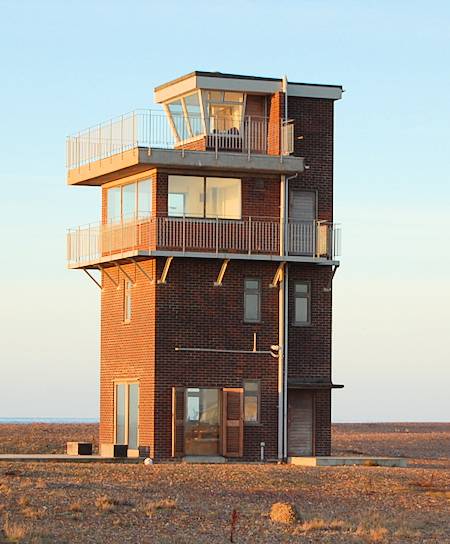
Coastguard Lookout Tower

The Electricity Link Station, now defunct, was built in 1957 and was used to act as ‘switch’ connecting and disconnecting the electricity grids of Britain and France. The building is still surrounded by the inch and a half copper earthing, that at one time also lined the interior. The RH&D Railway line is just yards from the front of the building.
The building is an excellent example of mid-century industrial architecture. Notable features include tropical hardwood detailing, some beautiful signage (some of which is in French) and exterior tiling. The building has planning permission to convert it into an artist's studio, with building work starting in June 2019 and still continuing in April 2021.
Find out more
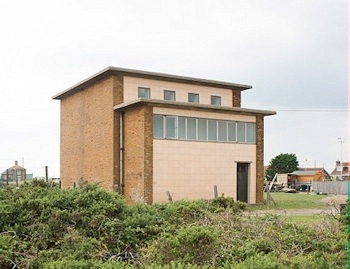
Electricity Link Station at Dungeness
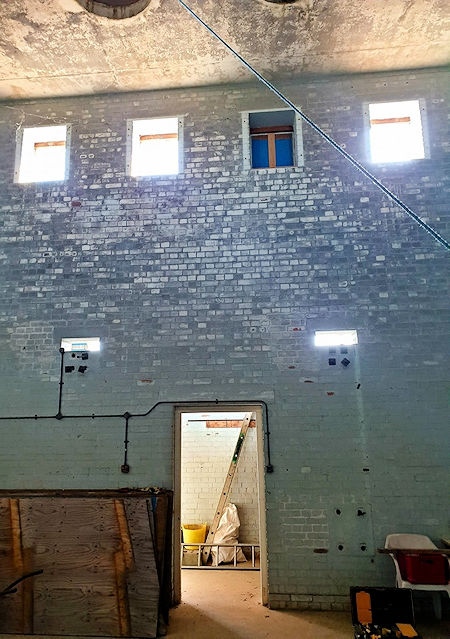
Inside the Link Station in 2019

The Experimental Station on Dungeness Point was formerly used by Trinity House as a research establishment testing marine apparatus and signal apparatus, including the very first unmanned lighthouse. The site is home to a number of inherited structures including a small railway, a radio tower and a structure used to test Fog Horns.
It is now a private home following its contemporary conversion to create, according to The Sunday Times, “A near-perfect architectural piece - the muted driftwood-grey boxes are weathering beautifully”
The existing asbestos cement clad workshop and a carport, heavily contaminated with metals, needed replacing to provide usable studio and workshop space. There was a desire to retain the poorly insulated former generator building too, and create a new assembly of eco buildings around a common courtyard shared with other existing structures.
![]() 360° Panorama of the Experimental Station
360° Panorama of the Experimental Station
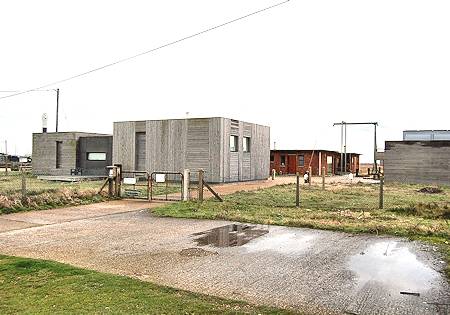
Experimental Station at Dungeness 

![]() Video A Unique Home in Dungeness
Video A Unique Home in Dungeness
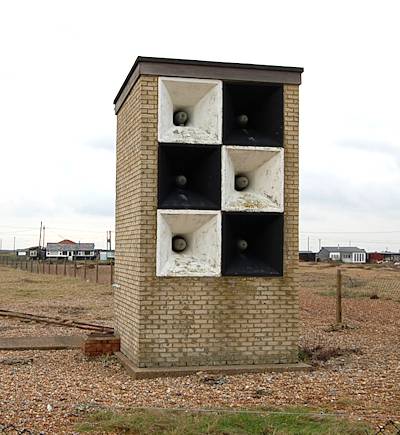

This was probably the first lifeboat station on Dungeness. Now a residential property, the original building was that with the pitch roof, with the flat roof extension added later.
The building is located about ¼ mile south of the present lifeboat station and further inland. It had been moved a couple of times eastwards to get it nearer to the sea.
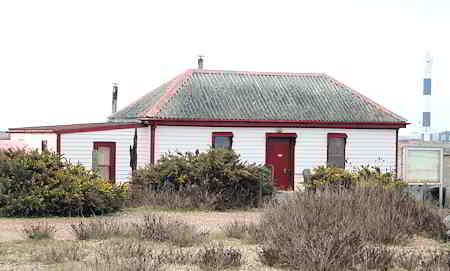
Old Lifeboat Station

There are about 30 properties on the shingle beaches of Dungeness which started life as railway carriages. The main railway line had been opened for passengers in 1883 but an anticipated development of a harbour at Dungeness never happened, which led to the passenger services being withdrawn in 1937 and freight services in 1953.
In the 1920s, the railway company allowed the redundant workers to purchase the old rolling stock and many lived in the abandoned carriages.
Planning regulations were very different in those days, and people just dragged them onto the shingle and set up home.
The shape of the original carriages with their rounded roofs can be seen quite clearly in the pictures below:
At least one of these railway carriages was thought to be one of six rolling stock built in 1885, for Queen Victoria’s entourage. The hitherto much misquoted Queen Victoria’s personal carriage is reported to have been delivered to Dungeness in the early 1930s, in Southern Railway green not the brown and cream livery that would be typical of a Pullman Class carriage – and as seen in the 1950s.
Originally known as ‘Windwhistle’ the name was changed when the lovely exterior was boarded over some 30 years ago. Although authenticity as to whether Queen Victoria ever traveled within, it certainly was one of several royal coaches used for her visits around the country – and probably used by her entourage.
![]() Find out more
Find out more
Much of its former glory is hidden behind tongue and grooved cladding, but in 2019 the new owners embarked upon a systematic and sympathetic rebuild (internally).
See picture ►
It is sited opposite the Britannia Public House – also known in the past as ‘The Smugglers’.
Many of the cottages were in a very rundown state, but Derek Jarman’s stylish hut and sea-garden, Prospect Cottage, led to a revival of interest in the area, and now many of them have been renovated and rejuvenated.
There are a mixture of residential properties and holiday homes, ranging from modern architectural marvels to higgledy-piggledy shacks. Largely, these are the only homes scattered across this unique nature reserve.
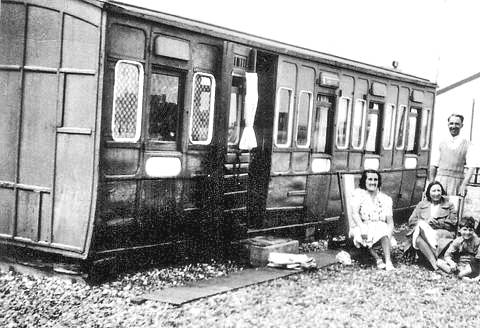
Railway Cottage Home c1935

An original fruit & milk rolling stock before conversion
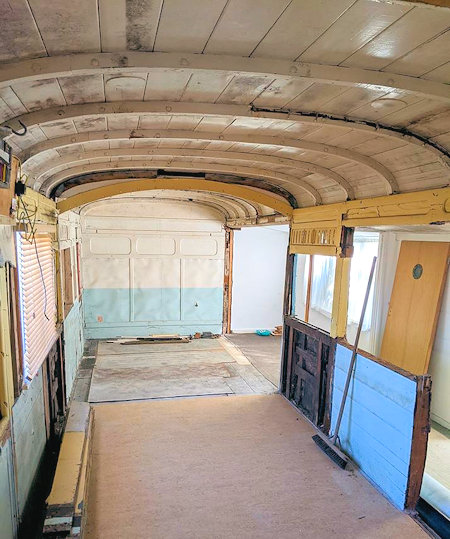
Inside of what purports to be one of Queen Victoria's Carriage
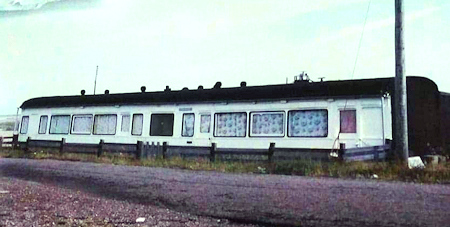
Railway Coach in 1973 before further conversion
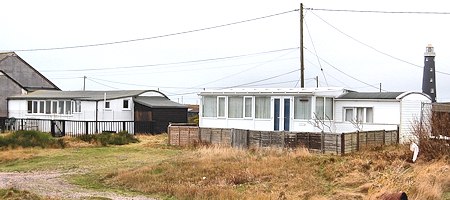
'Railway Cottages' today at Dungeness 

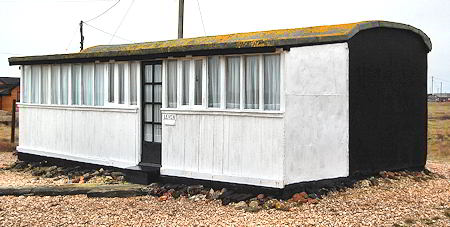

Royal Naval Shore Signal Station (RNSSS)
Built prior to the Second World War for use by the navy during the war. Now gone, it was located between the Old Lighthouse and the Experimental Station.
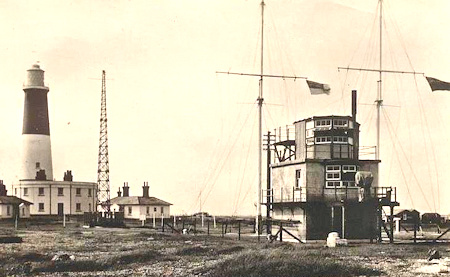
RNSSS c1942 (Ack. 56)

A solitary row of white terrace houses built inside what was Dymchurch Redoubt, these 11 cottages were built to house the Royal Naval personnel who manned the Royal Naval Shore Signal Service station on Dungeness Point, next to the Old Lighthouse. They are now they are owned by French electricity firm EDF Energy and leased via a property company.
The largest cottage no. 11 was for the Commanding Officer and is now used as a residential bird observatory but most of the other 10 are home to an assortment of families. Each house has three bedrooms.

In the past Tanning Coppers were used by the fisherman on Dungeness to help preserve and for dying fishing nets and clothing, such as overalls and aprons.
Fishing nets when new were white and were boiled in big circular copper tubs filled with water, and a fire lit underneath them. A lump of kutch was put in a basket above the water, and slowly dissolved.
Kutch is a plant resin from Burma and Malaya and is amber in colourand looks like translucent course pebbeles.
The kutch stained the water to a dark brown, and then the nets and clothing were soaked in it to preserve them against the ravages of the sea. The nets would normally be used only once, and then re-soaked.
Most copper owners brewed their preservative on the same day and the event became almost a social occasion.
Tanning coppers became redundant with the introduction of nylon nets.
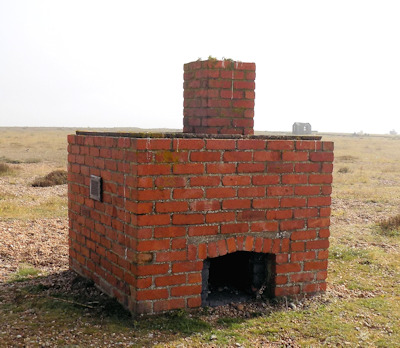
The pictures on the right show two of the Tanning Coopers still exisiting, albeit not now used, on Dungeness.
The top picture shows a Tanning Copper, originally built in 1920, that was restored to commorate the Millenium 2000 AD.
The second, larger than most, was built with brick in 1910 and is now owned by Mr & Mrs Tart. Mrs Tart's grandfather was the original owner. It is now a Grade II Listed Building.
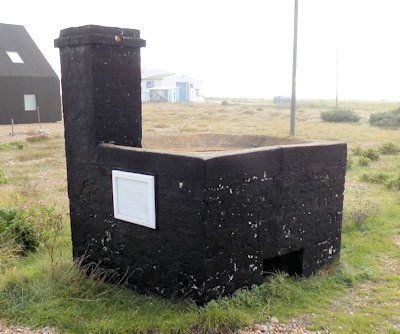
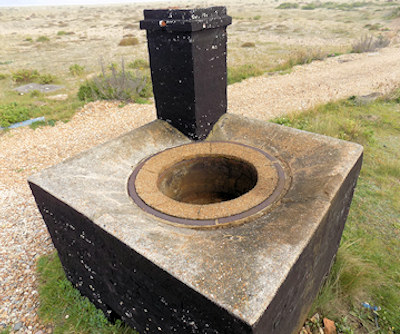

Built in the late 19th century, the Watering House on Dungeness is located on the right just as you enter the estate from Dungeness Road. At the time it was much closer to the sea and this is where ships moored and took on supplies of fresh water, which came from a natural well.
The house was built to provide accommodation for the family who provided fresh water to the passing ships.
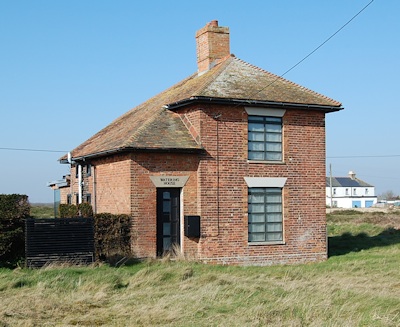
The Watering House in Dungeness

About 100 yards from the present lighthouse is an dilapidated old wooden shed in a forlorn state on the shingle. It was here that Guglielmo Marconi, the inventor of radio, conducted his tests in Dungeness in the 1890s.
Built around the late 1890's, Marconi used the shed for research and development in the transmitting of radio signals. His goal was to use radio waves to create a practical system of "wireless telegraphy", the transmission of telegraph messages without using connecting wires. In 1899 Marconi became the first person to send a message across the English Channel. NB It is not clear whether this was from Dungeness.
Later, the site was used by the Decca Navigator Company as a research station. At the time, the site consisted of a wooden hut surrounded by a high fence. The hut had radar mounting platforms on the roof and the site was used for testing radars in uncluttered surroundings not available at other Decca installations.
The current owner had applied (2017) for planning permission to re-build on the site.
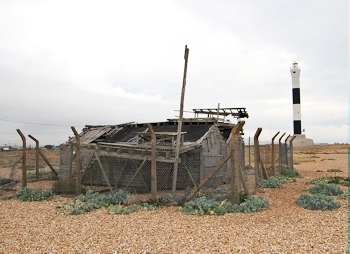
Marconi's Wireless Shed/Decca Research Station in Dungeness

Wooden boat winch that would have been used to haul the fishing boats over the shingle beach.
Similar to a capstan on board a ship, levers, known as bars, were inserted through holes at the top of the vertical timber and used to turn the winch. A rope, from a boat, was wrapped several turns around the vertical 'trunk' was thus hauled upon.
They were replaced by hand cranked cast iron winches and then by motor driven winches, some of which are still used today.
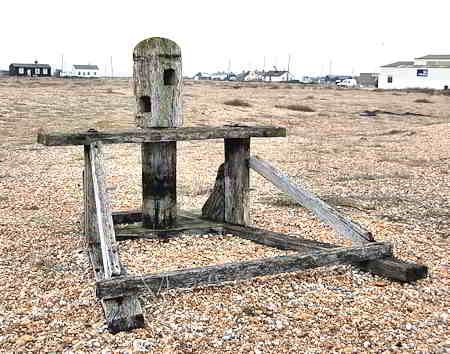
Wooden Boat Winch



